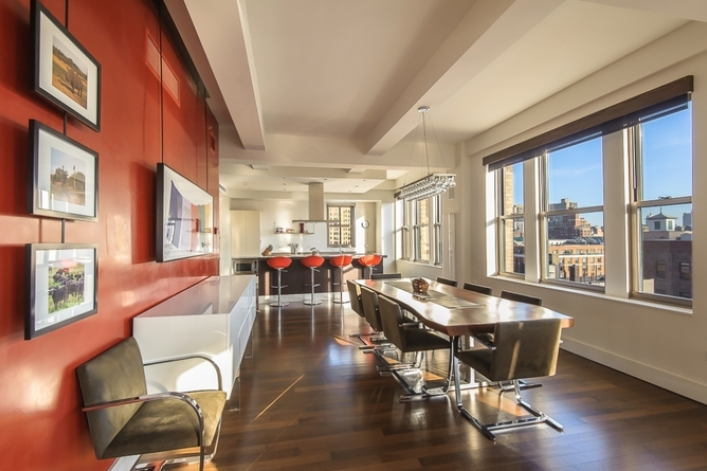If these (nonexistent) walls could talk: the drawbacks of moving into a loft

Nineties nostalgia may seem inescapable these days, but at least in New York, there's one notable exception to the rule: lofts. Where cavernous spaces with open layouts were once all the rage—and evoked an "artsy" downtown lifestyle even when buyers were dropping millions on them—the New York Observer writes that more and more New Yorkers are starting to appreciate the benefits of closed doors.
"I’ve heard from buyers again and again that while they love the wow of the big, open space, they have a hard time living in it," one broker told the paper, and in particular, kitchens with a little added privacy have been increasingly in-demand.
It's not to say that you should abandon your dreams, if you have them, of an airy open layout (and taking down walls can make a small space feel larger), but before you set up shop in a loft space, here are some things to keep in mind:
- The kitchen. An open kitchen seems to be the top complaint for owners of lofts, and it makes sense—while it can be nice to prep snacks or mix a few drinks while still chatting with your friends out in the living room, sitting down to eat in full view of the night's dirty dishes is a bit of a buzzkill. There are also smells—and sounds—to consider. "You get the commotion of the kitchen, the noise, the smell, the distraction," Brown Harris Stevens broker Paula del Nunzio told the Observer of loft apartments. "It's beautiful conceptually, but not in real life." If you're a Seamless devotee this might not be a problem, but if you're whipping up nightly meals, kitchen privacy is an important thing to keep in mind.
- The decor. Coordinating the look of an individual room is one thing, but in a loft, everything has to work together. "If you have a green marble countertop you have to be able to bring that design into the rest of the room," one broker told the paper, and Domino creative director of interior design Robert Leleux added, "furniture looks perfectly ridiculous floating in an empty space." Either a check in the "con" category or an exciting aesthetic challenge, depending on your decorating prowess.
- The family. People with kids make up an ever-larger portion of New York's wealthy buyers, and when you have a family, you need rooms (just think if a playroom's worth of toy clutter suddenly became your entire apartment). In other words, for most people, the older you get the less inclined you are toward loft living. Not a cause for concern if you're renting, but if you're looking to buy for the long haul, think about what you might want a few years down the line, like the ability to wash dishes (or watch TV) without waking up the smaller members of your clan.
- The investment. This one's for the buyers, but it's important to keep in mind: what's hot on the market now may not be in a few years, so you may not want to go hog wild with loft-inspired renovations. The Observer cites one co-op owner who knocked down a 1920s wall to "open up" his pre-war co-op, only to spend $50,000 restoring what he'd taken down after realizing the place looked like a "dismal studio." Even in 2012, the Times cautioned against renovating your kitchen to cater to the "open layout" trend ("It's not going to bring you $25,000, like an extra half bath would," explained one broker). After all, you want to expand your pool of possible buyers, not shrink it.
Related:
Open vs closed kitchens not open-and-shut case






















